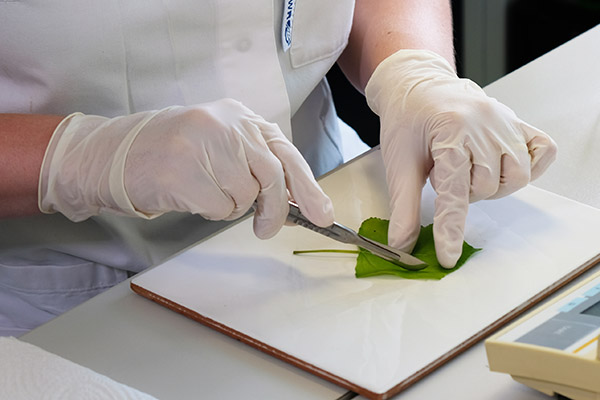There is a great potential of poplar bark from short-rotation coppices as bio-based fungicidal additives!
In the newest research of the Dendromass4Europe project, it was found, that the bark of poplar clones contains different potential fungicides. Bark as a by-product of wood plantations is available in high quantity and can serve as an excellent source for the production of eco-fungicides. Those fungicides can help to reduce plastics in packaging or extra-added chemicals to reduce mold.
In the newest article, bark of various poplar clones from two short-rotation coppices (SRC) in Poland and Germany was examined to determine the chemical composition, the possible extraction of potential fungicides (terpenes, aromatic and phenolic substances), and influence of their extracts on slowing the growth of mold fungi. The content of these substances depends strongly on the clone and age and only slightly on the growing location. This can help manufacturers and farmers decide on specific clones on their short rotation plantations (SRP). Independent of location, clones Hybrid 275 and Max1 contain the highest amount of potential fungicides of all the investigated clones.

The extractability of the potential fungicides using simple methods is also crucial for producing the extracts as fungicides. For this, the Soxhlet extraction was compared with the batch process. It was observed that the presence of oligomeric sugars requires a pre-extraction with water in both methods. The composition of the extracts obtained is also process-dependent in addition to the influences of the clone. The Soxhlet process mainly produces fat-based phytochemicals and triterpenes. The most effective Soxhlet extracts against mold growth are those of high Stigmast-4-en-3one or phenol content. Aromatic and phenolic substances are also contained in the batch extracts, from which 2-(phenylmethoxy)-phenol, catechol, and salicylic alcohol slow the mold growth. The latter, however, requires a higher concentration because of their only moderate activity against mold fungi.
Clones with high potential of fungicidal extracts in their bark are AF2, AF16, Max1, and H275. The necessary concentration of extracts for effective activity against molding depends on their comprising substances. In the tests, the concentration of the extracts in batch extraction, which is the more economical method, had to be doubled to show fungicidal effects.
Link to BioEnergy Research: https://link.springer.com/article/10.1007/s12155-021-10253-9
